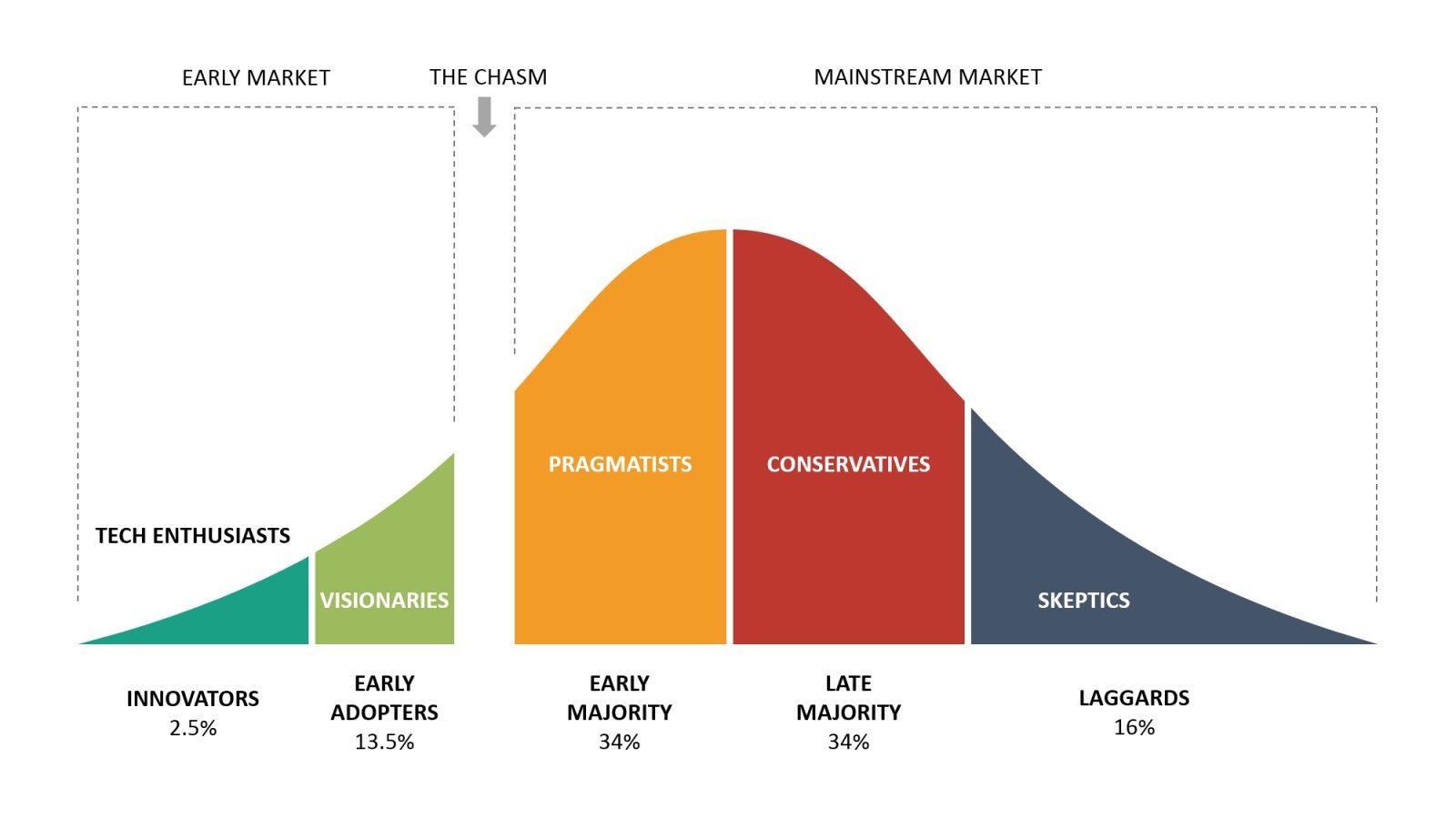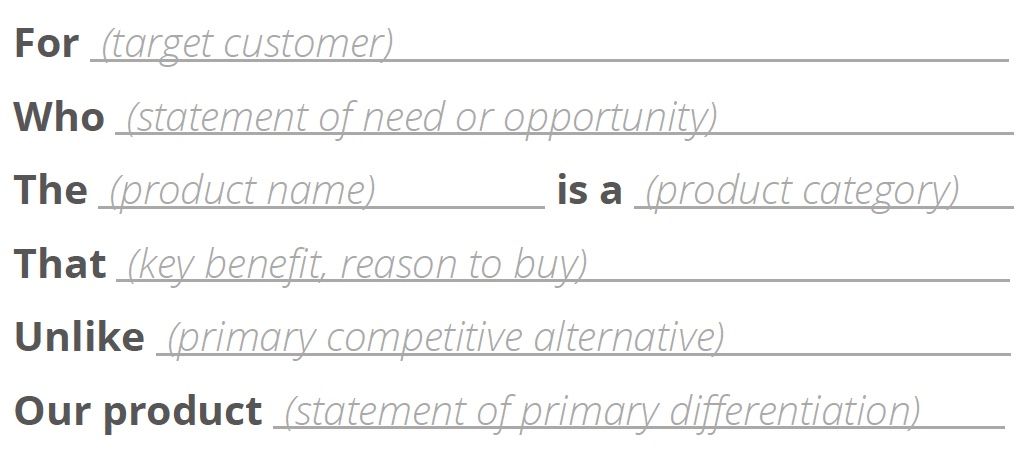
Chasm Crossing is not the end, but rather the beginning, of mainstream market development - Geoffrey Moore.
Building Disruptive Products in the era of IoT, 5G, and AI requires a business to be innovative in its product ideas - it needs to cross the chasm going from a limited number of early adopters and innovators to a mainstream market - enabling a vast majority of consumers with their technological solutions.
I completed my graduation in Technology Entrepreneurship & Innovation at Saint Mary’s University, Halifax (MTEI) and one of my favourite subjects was Entrepreneurial Marketing taught by professor Dr Gordon Fullerton.
As part of the course, we studied the author Geoffrey Moore’s book - Crossing the Chasm. Crossing The Chasm talks about marking and selling disruptive products to the mainstream market.
According to Moore, innovators face a challenge when they try to introduce a new product into the mainstream market. According to Moore, Market uptake of any new technology is defined by the Technology Adoption Lifecycle over time.
While businesses are trying hard to build disruptive products, it is also important that they make sure the product features are fully utilized. According to a study on "The State of Product Leadership" published by the Raleigh-based cloud tech startup - Pendo, almost 80 per cent of product features are “rarely or never used.”.
The idea in Short:
Any new technological adoption starts from a handful of innovators and early adopters through the mid-market comprising of the early majority and late majority followed by the most change-resistant consumers - who are sceptics and are not ready to adopt technological changes unless it is really required.
The difference between the early adopters and the mainstream market is called “The Chasm”.

Customer Groups: According to Moore, the technology adoption lifecycle is split among the following customer segments:
- Innovators
- Early Adopters
- Early Majority
- Late Majority
- Laggards
Each segment has different expectations and Moore has suggested some ideas to successfully cross the chasm to enable companies offering innovative technologies to cross the chasm.
Moore recommended a template for drafting the Product Vision by bringing all the key stakeholders together for setting the long-term goal for the product. We can follow the following structure to build our "Product Vision".

How do we cross the chasm?
Companies operating in the space of IoT, 5G, and AI are facing the challenge of crossing the chasm making their technological solutions appeal to the mass market.
In order to find acceptance in the mass market - we need to first segment the market by catering to a limited number of early adopters - who need the solution. By targeting a very specific niche market and by solving their absolute needs - companies will be able to win the confidence of that group of consumers. Once our products win the confidence of Innovators and early adopters - we can cater to the early majority - who are receptive to new technological advancements based on proven results in the form of a full solution.
Some of the methods recommended by Moore for winning the confidence of consumers include the following steps:
- Identifying a very specific niche target market.
- Offer a full solution to cater to the needs of the early majority (34%) - pragmatists.
- Market Positioning
- Marketing Strategy
- Distribution
- Proper Pricing
Creating Value with IoT, 5G, and AI:
As I discussed in my article on Product Innovation - in order to achieve a monopoly in any specific sector- companies need to offer value in their products and services - they need to offer something very new - something that can not be copied. We need to go from Zero to One through Vertical progress involving innovation.
IoT: The Internet of Things (IoT) is emerging as a new technological trend that will disrupt how we engage with technology. As per the report published by Statista on IoT device penetration, by 2025 over 30 billion devices will be installed with IoT capabilities.
As businesses, we need to find ways to create value by offering solutions that can cater to this growing demand for innovative solutions. We should be able to access the data and analyze and customize customer experience in real-time. It is only then - we can see the adoption of emerging technologies such as IoT at scale.
5G: With more and more devices getting connected to the internet and generating vast amounts of data - we need to rely on technologies such as the emerging 5G technology which has got the potential to connect a large number of devices and move the enormous amounts of data in real-time with less latency.
5G has been designed with massive network capacity and increased availability to offer an improved user experience by seamlessly connecting machines, objects, and devices with ultra-low latency.
AI: With the advent of the growing adoption of IoT - we are seeing more and more devices getting connected to the internet - we will see a growing trend wherein these devices will be generating vast amounts of data and this trend is bound to increase exponentially. According to a report published by International Data Corporation, there may be 163 Zettabytes of data (equivalent to one trillion gigabytes) by 2025.
We can rely on Artificial Intelligence and Machine Learning to generate actionable insights. and Artificial Intelligence (AI) has great potential to contribute to the next level of growth by making tools and solutions available across a broad spectrum of business operations.
(McKinsey report on AI frontier)
Final Thoughts:
Emerging Technologies such as IoT, 5G, and AI are going to disrupt the way we engage with technology - these technologies are capable of offering improved customer experience by analyzing and offering customized solutions to consumers at scale.
According to Moore, in order to find acceptance for emerging technologies in the mainstream market. We first need to target and go after a very specific niche market initially by offering products and solutions in an innovative way. By establishing a monopoly with the early adopters - we can expand into other markets by offering customized solutions for each segment in a focused way. As Moore quoted, crossing the chasm is not the end - but the beginning of mainstream market development.
How is your business catering to the mainstream market? What are you doing to engage with emerging technologies - IoT, 5G, and AI?
Sources:
- Book: Crossing The Chasm by Geoffrey Moore
- Report: McKinsey report on AI frontier
- Report: Ericsson’s report on Connected Industries -A Guide to Enterprise Digital Transformation Success.
- Report: IDC’s Data Age 2025
Video: How to Drive Product Innovation by Ericsson VP, Head of IoT - Book: Andrew Ng’s AI Transformation Playbook
- Report: The State of Product Leadership by Pendo

